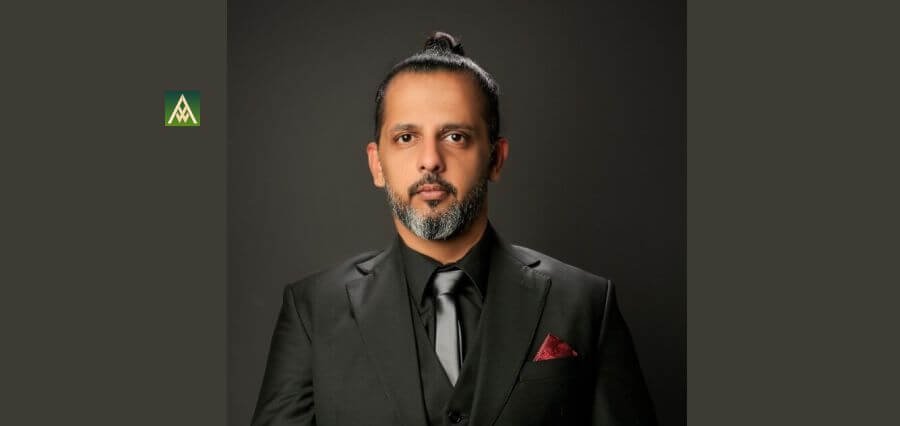In his masterpiece, ‘How to Create Advertising That Sells,’ the father of Advertising, David Ogilvy, says, “Unless your advertising is built on a BIG IDEA it will pass like a ship in the night,” and “What you show is more important than what you say.”
“Both of these quotes contain two crucial sub-elements – a big idea & showing instead of telling – of the most important trait of every best-selling advertisement: Story,” says Melwyn Abraham. “Moreover, in today’s age, what enterprises, businesses, and companies need is—
—A Strong Digital Brand Story
Nowadays, everything is digital. If it is not, then, for a vast population, it does not exist. Melwyn says, “In our niche of public relations powered by digital communication, creating a brand story that will connect with the audience is the most crucial factor.” Thus, knowing and using all the digital avenues available to us effectively to build an impactful brand presence is vital. “It is where we at Cogentix Consulting excel by strategically weaving together all the strings of communication, generative intelligence, people insights and PR into an immersive experience with the boundless possibilities offered by the digital technologies to create resonant and enduring brand identities that will last forever,” explains Melwyn.
Thus, his role leading Cogentix Consulting is rooted in a commitment to combine the power of storytelling with the digital landscape’s full potential, and create a brand’s story like a living, breathing entity that resonates deeply with its audience and makes a lasting impact on the business outcomes.
Pivotal Reflections
Melwyn’s journey into creating powerful brand stories started long before he created Cogentix Consulting. If you wish to know his origin, picture a young Melwyn, eyes wide with curiosity, stepping into the vibrant bazaar of ideas and narratives.
He was always captivated by stories and how they could transport, transform, and transcend boundaries. Marketing or Advertising, he realized, was the modern-day campfire around which these tales were told, not just to entertain but to engage and evoke action.
“I knew I wanted to be in advertising while still in school,” reflects Melwyn. Back then, he thought it was all about writing clever lines and winning awards. But as he grew, Melwyn realized that great advertising is just a door. What lies beyond it is the real story – human connection, empathy, insight. That’s when he pivoted towards storytelling, where he could dig deeper into why people behave the way they do, not just how to get their attention.
Even though Melwyn was unmarried then, he understood the wisdom in what David Ogilvy once quipped, ‘The consumer isn’t a moron; she’s your wife.’ This nugget of insight underscored the importance of never underestimating the consumer, “A lesson that has stayed with me to this day and, quite possibly, helped my marriage too,” adds Melwyn.
However, what transformed it for him was another quote by Ogilvy: ‘If it doesn’t sell, it isn’t creative.’ Over time, Melwyn found the real goal wasn’t just to sell—it was to serve. That realization became his clarion call, drawing him into the space where the science of storytelling converges with the art—and commerce—of business.
A Journey of Finding Out ‘Why?’
In his current role as Founder and CEO at Cogentix Consulting, this is how a typical day looks like, where Melwyn balances creativity with data-driven decision-making: Mornings are sacred—reading, yoga, and quiet learning before the noise sets in. “I begin with a call to my advisors and team. It’s not just about updates but more a ritual of alignment. We talk about trends, share failures, and celebrate wins. We check in not just on what we’re doing but why we’re doing it.”
Melwyn’s method is simple. He finds his why, his team’s why, and the client’s why, and only then starts building. Creativity is non-negotiable, but so is logic and business. The best ideas are the ones that dance between instinct and insight. Data drives his long-term decisions. He loves data and believes that data doesn’t dim creativity—it gives it direction and clarity.
This is something Tim Ferriss discusses in Tools of the Titans: the idea of clarity through constraints. When you track, you improve. When you test, you refine. Melwyn encourages his team to measure what matters but also to leave space for what can’t yet be measured: insights, intuition and human touch.
Constantly Adapting to the Seismic Shifts
Marketing has evolved rapidly over the past decade. To cope, Melwyn has always been personally adapting to these shifts. To him, Adaptation is not a one-time switch; it’s a continuous recalibration. As he puts it, “I’m adapting, not adapted.”
The shifts are seismic—what worked at breakfast is obsolete by lunch. A few years ago, he was obsessed with ideas. “Now, I’m obsessed with outcomes. And output and out-takes.”
He continues, “We used to sell the sizzle. Now, we show the data. But that doesn’t mean we abandon our souls. It means we speak both languages, the poetry of emotion and the precision of numbers.” What’s changed Melwyn most? Learning to zoom in and out—macro vision, micro action. Big-picture thinking backed by bite-sized analytics.
The most seismic shift? The democratization of content creation. The power dynamics have tilted, with consumers becoming co-creators. This participatory culture means brands no longer just broadcast but engage in dialogues. As Seth Godin aptly put it, ‘Marketing is no longer about the stuff that you make, but about the stories you tell.’ The most successful brands are the ones that tell the best stories.
“Malcolm Gladwell’s Outliers shifted my view on success,” he reveals. It’s never just talent. It’s timing, effort, and environment. Success is manufactured—not manifested. And marketing is no different. ‘You need context, not just content. You need to understand the hidden patterns, the cultural cues, the compounding of practice.’
The Proudest Achievements
Melwyn then shares a campaign from his past role that he is proud of – what made it stand out, and what did he learn from it. “It holds the special space. ‘One Zurich Blue Sofa. Countless Dreams’ initiative for Zurich Middle East. This wasn’t just a campaign; it was a symphony of stories, each note resonating with aspirations and trust. The blue sofa became more than furniture; it morphed into a metaphor for comfort, conversations, and commitments.
The other one during the same period that stands out is building the brand through media for Milestone Systems, which was a defining moment. Melwyn recalls, “I took a deeply technical topic—video management software —and made it resonate with people. However, more than the messaging, it was the method that changed the game. I applied Scrum—yes, the Agile methodology—to PR.”
They say the best way to find out if you can trust somebody is to trust them. Sometimes, the same applies to processes.
He continues, “We moved from long-winded, linear planning to quick, iterative storytelling. We tested, learned, and pivoted. And that agility paid off. The campaign not only won awards but it also reshaped how we approach PR today.”
Both campaigns worked because Melwyn and his team didn’t wait for perfection; they just got better, faster, together.
Diving into Human Behavior
Customer behavior is always changing. To stay attuned to the audience’s needs, Melwyn traded marketing books for books on human behavior—Robert Cialdini, Daniel Kahneman, Malcolm Gladwell and even fiction writers who understand people better than psychologists do. Because, at its core, marketing is not about platforms or funnels; it’s about people.
Moreover, immersing oneself in the cultural zeitgeist is invaluable. Attending events, participating in forums, and even casual conversations often unveil undercurrents that data might overlook.
“Robert Cialdini reminds us in Pre-Suasion that people are most receptive when they are in a state of openness—so our job is to craft that moment, not just the message. When we listen deeply, we know when that moment is.”
Melwyn’s mantra is simple – you can’t market to someone you don’t understand, and you can’t understand someone you haven’t met.
There’s no substitute for sitting across someone, listening without judgment, and observing without an agenda. “Tools are helpful—yes, we can use analytics platforms, sentiment trackers, and audience heatmaps. But insight lives in eye contact, not spreadsheets. The Zurich Blue Sofa is a great example of that,” he insists.
The Power of Storytelling
To ensure that the brand’s message resonates across diverse platforms, Melwyn says he always makes it his priority to integrate storytelling into their marketing. “I grew up reading fiction more than textbooks. I think that’s where my love for storytelling was born. I learned early on that people forget numbers, but they remember how a story made them feel.” The brands that stand the test of time don’t just broadcast—they narrate.
Storytelling isn’t just a tool in Melwyn’s arsenal; it’s the very essence of his marketing philosophy. “We try to embed story everywhere—from pitch decks to client emails, from campaigns to internal training.” Because stories make facts feel personal. They create memories. Maya Angelou said it best, ‘People will forget what you said… but they will never forget how you made them feel.’
“I have heard leaders talk about emotional salience—that stories which reflect our fears, dreams, or values cut through the noise. That’s our job. Not to shout louder, but to resonate deeper.”
“Today, we have more platforms than ever—but the goal hasn’t changed. You just need to tell the right story in the right language for each.”
The Leadership Constant
When it comes to leadership, Melwyn says that at Cogentix Consulting, their Business as Usual (BAU) is Innovation. But they’ve expanded on that. For them, BAU means Building, Adapting, and Upgrading. He encourages experimentation—not just in campaigns but in culture. “We run pilots that are different to our core business. We fail often. I treat curiosity as a personal KPI.”
A marketing leader today doesn’t need to be the loudest voice in the room. They need to be the clearest mirror. Leadership is not about being in charge—it’s about taking care of those in your charge, as Simon Sinek puts it.
If you want innovation, don’t ask people to think outside the box. Remove the box altogether.
“Many top performers ask ‘What would this look like if it were easy?’—I’ve embedded that in how I manage teams.” Put the customer first. Strip the clutter. Empower people. Let simplicity lead to brilliance.
His Crucible Moment
Talking about challenges, Melwyn shares one major obstacle he’s faced in his marketing career and how he overcame it. “Crisis communications wasn’t part of my toolkit until I was thrust into it,” he shares. Suddenly, he was navigating global headlines, internal chaos, and reputational risk—often all in the same hour. So, he did what he does best—learned, studied, asked, observed, and practiced.
Every marketer has their crucible moment—a challenge that tests mettle and molds character. For Melwyn, it was navigating a crisis communication scenario for a leading brand. The digital realm was ablaze with misinformation, and the brand’s reputation hung in the balance. The path to resolution was paved with transparency, timely communication, and unwavering integrity. “I didn’t just put out fires; I rebuilt bridges of trust.”
What started as uncertainty became second nature. “Over time, it became one of my core strengths. Today, I’m known for it.”
The lesson? Sometimes, the very thing you fear is the thing that unlocks your next level.
Gladwell’s Outliers reminded Melwyn that it’s not the crisis—it’s what you’ve trained for (10,000 hours) quietly before the crisis. In the thick of it, all your experience condenses into instinct. You don’t rise to the occasion—you fall to the level of your preparation.
Giving the Real Feel in the Age of AI
Advanced technologies are inevitable, says Melwyn. AI is here. It’s not a threat—it’s a teammate. The marketers of the future won’t be replaced by AI, but they will be replaced by a marketer who knows how to use it. “I believe in HILT—Human Insight Leveraged by Technology.”
While AI writes headlines, humans write hooks. AI can optimize, but only humans can empathize. “That’s our edge.” And that’s what will matter even more in a world overrun with content—what feels real.
Automation works best when the fundamentals are strong. So, if you don’t understand persuasion, behavior, and trust—you’re just automating noise. It’s still garbage in, garbage out.
Anuja Shah said it best when she said, ‘Ask not if AI will take my job? Ask if it will take my job… to the next level.’
A Perfect Piece of Advice
Finally, Melwyn’s advice to the next generation of marketers who are just starting to find their voice in this ever-changing industry is: Build three pots and fill them every day: Knowledge, Skills, and Network. The rest will come. Read like your career depends on it—because it does. Learn by doing. And never underestimate the power of a genuine connection.
The industry will keep changing. Algorithms will keep shifting. But if your fundamentals are strong, you’ll ride every wave instead of drowning in it.
‘Play long-term games with long-term people.’ That’s how reputations—and careers—are built.
They say that your life is a reflection of your standards. The earlier you raise them, the sooner the world will reflect them back.




